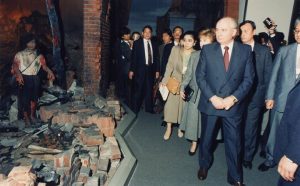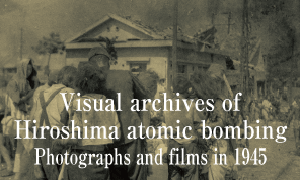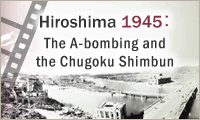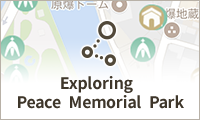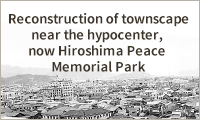Documenting Hiroshima 80 years after the A-bombing: in April 1992, Mikhail Gorbachev visits Hiroshima
May 14, 2025
Gorbachev called for solidarity in the total abolition of nuclear weapons
by Kyosuke Mizukawa, Senior Staff Writer
On April 17, 1992, former President Mikhail Gorbachev, the last leader of the Soviet Union (who passed away in 2022 at the age of 91) visited Hiroshima. He laid flowers at the Cenotaph for the A-bomb Victims and visited the Peace Memorial Museum in Peace Memorial Park in Naka Ward. Reflecting on his years at the head of a nuclear superpower, he said he had responded to an appeal from Hiroshima and pursued policies with that in mind.”
The Berlin Wall, long a symbol of the Cold War, fell in November 1989. In December, Gorbachev and U.S. President George H.W. Bush declared the end of the Cold War at the Malta Summit. In 1990, Gorbachev was awarded the Nobel Peace Prize for his role in fostering reconciliation between East and West.
His commitment to nuclear disarmament was also one of the reasons he received the prize. In 1985, when he became General Secretary of the Communist Party, he held a summit with U.S. President Ronald Reagan. They issued a joint statement declaring, “A nuclear war must never be fought.” In 1987, the United States and Soviet Union signed the Intermediate-Range Nuclear Forces (INF) Treaty and in 1991, they signed the first Strategic Arms Reduction Treaty (START I), which aimed to cut their strategic nuclear weapons.
Gorbachev visited Japan with his wife
Responding to a request from the mayors of Hiroshima and Nagasaki, conveyed through the Soviet foreign minister during his visit to Japan, Gorbachev sent a personal letter expressing his understanding of their concerns and his belief that the 21st century must be free of nuclear weapons. Although his visit did not take place, he mentioned Hiroshima as a proposed site for a U.S.-Soviet summit on banning nuclear tests in his speech in May.
First, in April 1991, Gorbachev visited Nagasaki. After the collapse of the Soviet Union, he left office in December. However, in 1992, he returned to Japan with his wife, Raisa, at the invitation of a welcoming committee chaired by former Prime Minister Yasuhiro Nakasone, and visited Hiroshima.
After visiting the Peace Memorial Museum, he gave a speech at a citizens’ meeting held at the International Conference Center Hiroshima. He expressed his respect for those who had continued to raise their voices with the call “No more Hiroshimas.” He emphasized that weapons of mass destruction should be reduced to the minimum in several years and then completely abolished to create a new world order. He also said the most important thing is for humanity to walk hand-in-hand.
There was no clear path to abolishing nuclear weapons
However, there was no clear path to abolishing the roughly 60,000 nuclear weapons that still existed worldwide around the end of the Cold War, and new regional conflicts were beginning to emerge. In August 1990, Iraq invaded neighboring Kuwait. In January 1991, U.S.-led multinational forces launched airstrikes against Iraq, escalating into the Gulf War.
Sheikh Fahad’s death in battle was reported shortly after Iraq’s invasion. He was a member of Kuwait’s royal family, the House of Sabah, and served as president of the Olympic Council of Asia (OCA). He was recognized as an Honorary Citizen of Hiroshima for his efforts to bring the 12th Asian Games to the city in 1994.
In 1984, he visited Hiroshima as a member of an investigative committee tasked with deciding where the Asian Games would be held. During his visit, he toured the Peace Memorial Museum and laid flowers at the Cenotaph for the A-bomb Victims. Hiroshima Mayor Takeshi Araki stated, “On behalf of the citizens, I express my condolences.” In the city, A-bomb survivors and other citizens repeatedly held sit-ins in front of the cenotaph and organized meetings calling for a ceasefire in the Gulf War.
(Originally published on May 14, 2025)

